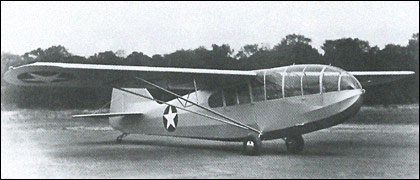|
| There is no text information for this aircraft at the moment.
| Paul E. Nichols, e-mail, 23.01.2011 08:12 Where are the Taylorcraft BC12D series? A bunch were made.
The Piper Cub was designed by Taylor and was originaly called the Taylor cub.That changed when Piper bought the company reply | | Paul E. Nichols, e-mail, 23.01.2011 08:10 Where are the Taylorcaft BC12D series? A bunch were made.
The Piper Cub was designed by Taylor and was originaly called the Taylor cub.That changed when Piper bought the company reply | | John Hess, e-mail, 20.11.2010 20:53 I owned a 1940 BL-65 (N26528). Operated it out of Sonoma Skyport and Gnoss (DVO). 65hp Lycoming, wooden prop. So sorry I let it go...what a fun little airplane. You could hardly see squat from the cabin but who cared. Strong, gusty crosswinds? Yes, they would make you come alive on landing. reply | | Bill Kesinger, e-mail, 05.05.2010 16:30 In 1949 I owned and got my private license in N47757, a TG 6 conversion. Formerly a glider converted with a 65 hp Franklin engine. A 2 place tandem, we called it a L 2. I flew it 178 hours and sold it n 1951. This number is now owned by a man in Anchorage, AK. reply | |
| | charlie rowe, e-mail, 05.04.2010 11:25 in 1950 i had an L-2 taylorcraft tandem it had spoilers in the wings great airplane anybody out there have any pics of an L-2 reply | | Leo Rudnicki, 28.01.2010 11:21 While the Piper J-3 gets covered,Taylorcraft and British Taylorcraft /Auster with engines get nothing. Just a glider based on an aircraft not mentioned. Conspiracy? Or dreadful oversight? Your call. reply | | Verne Lietz, e-mail, 28.01.2010 07:48 Why is there no section on the BC models ? I had a 1941 BC12 65 h,p that was a great little plane. Four gph, 92 mph, never a problem in the three months and several thousand miles I had it until it was wrecked in a ground accident by someone else...while I was hanging on a wing strut!
Later I got a nearly run out 1940 BL12 with a 55 h.p. Lycoming engine. It cruised at 75 mph on 3.6 gph. In 1952 it needed recover and at that time another plane of the Cub, Aeronca and Taylorcraft class could be bought for less than the price of recover (Like $450. I had a part-time gunshop and got mine in trade for five new .30-30 Winchester rifles at $245.) reply | | Jim Phillips, e-mail, 16.01.2010 01:25 I fly a Taylorcraft BC-12D. how do I input the model into the museum? reply | | Roy Jackson, e-mail, 31.12.2009 19:05 I had my first solo with eight hours of instruction in a T-Craft. That was in December of 1959. I was 20 years old and have long since given up being the pilot in command. My solo ride was in Columbia, Missouri. I found this plane in Missisippi a few years ago and it's still flying. Last summer my family and I were visiting a private aviation museum near Sand Point, Idaho and as we were leaving a couple of guys taxied up in a 1946 completely restored Taylor Craft. These things will fly forever if maintained. A wonderful recreational airplane. reply | | Bryan Berlin, e-mail, 02.04.2009 15:38 We have restored a TG-6 in Marshall,MO at the Nicholas-Beazley Aviation Museum . 660-886-2630 reply | | Olen Sheperd, e-mail, 02.02.2009 19:05 I learned to fly in 1940 in a 2-place Taylorcraft BLT. It had a Lycoming 50 HP engine, was manufactured in Alliance, Ohio. I went to college in Alliance and met Glen Taylor when he talked to our college flying club. Glen worked for Bill Piper prior to starting his own company reply | | Charles Day, e-mail, 27.05.2008 17:34 The TG-5, TG-6 and TG-8 by Aeronca, Taylorcraft and Piper were an idea of the then head of the CAA. In less than one week, engineers completed the design work for building the Aeronca TG-5 which was test flown and immediately put into production. Contracts were then let for building the L-4, L-5, L-6 airframes, sans engines, with a third seat in the nose extension in place of the engine. The contracts were for 250 each TG-5, TG-6, and TG-8. Although the U.S. Navy was in process of shutting its glider program, three from each manufacturer, were assigned to the Navy. In 1944, at the U.S. glider test and experiment base, Clinton County Army Air Field, one XTG-6 was converted for prone position flying to conduct G force tests, comparing prone and sitting pilot positions. This glider was designated XTG-33. This is an extract by the author of, from Silent Ones WWII Invasion Glider Test and Experiment CCAAF Wilmington Ohio. reply |
|
Do you have any comments?
|
| |









